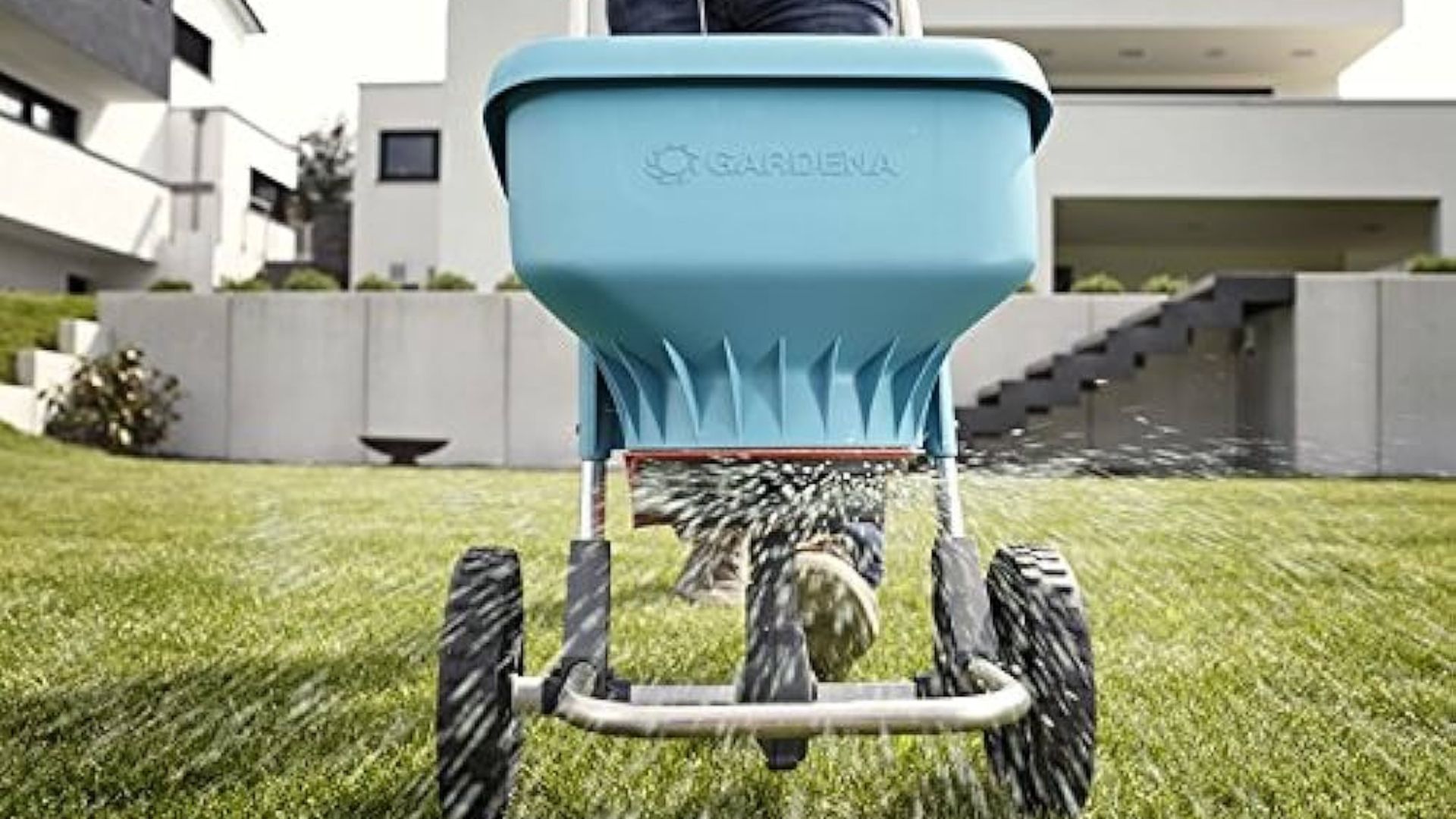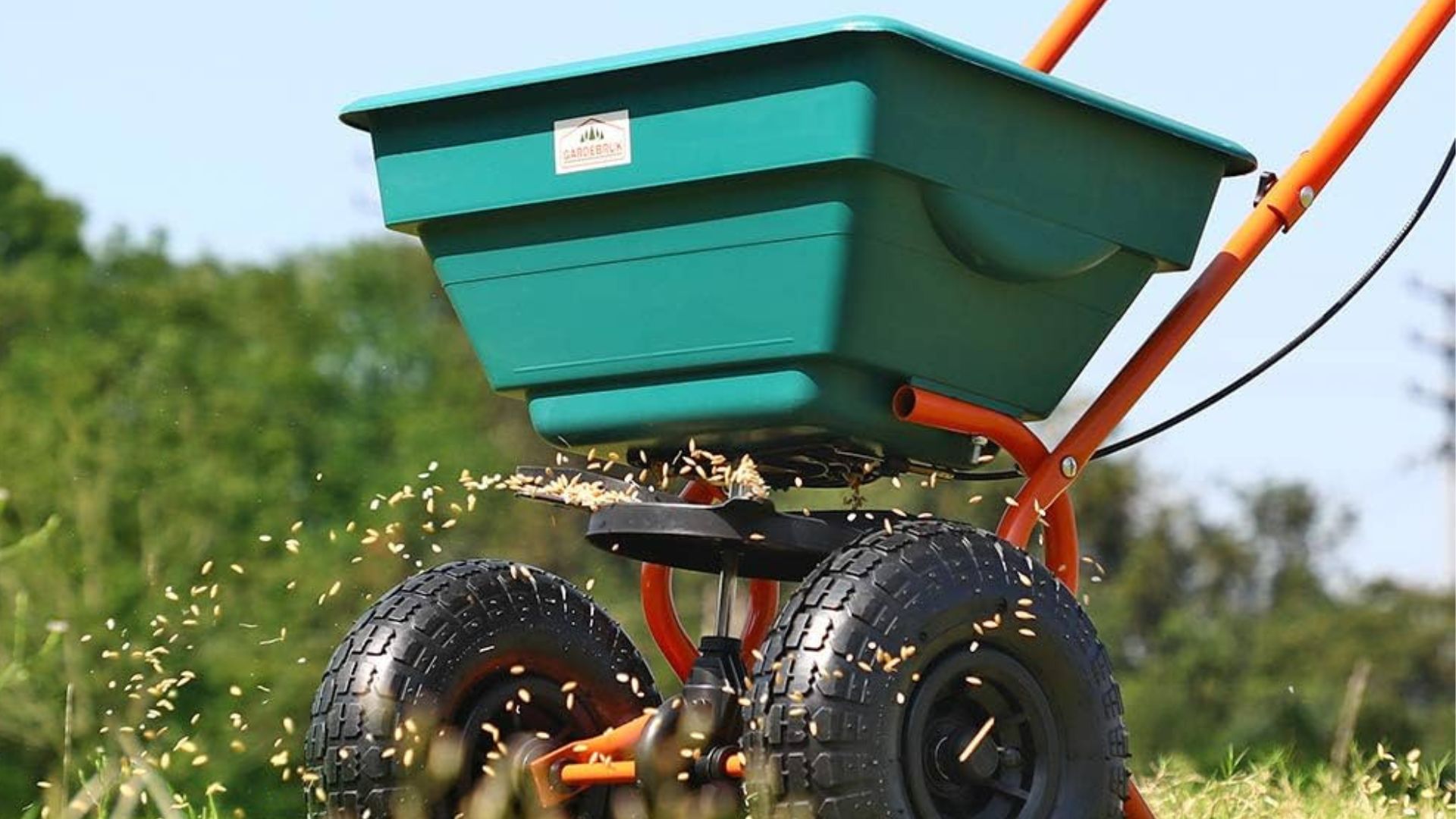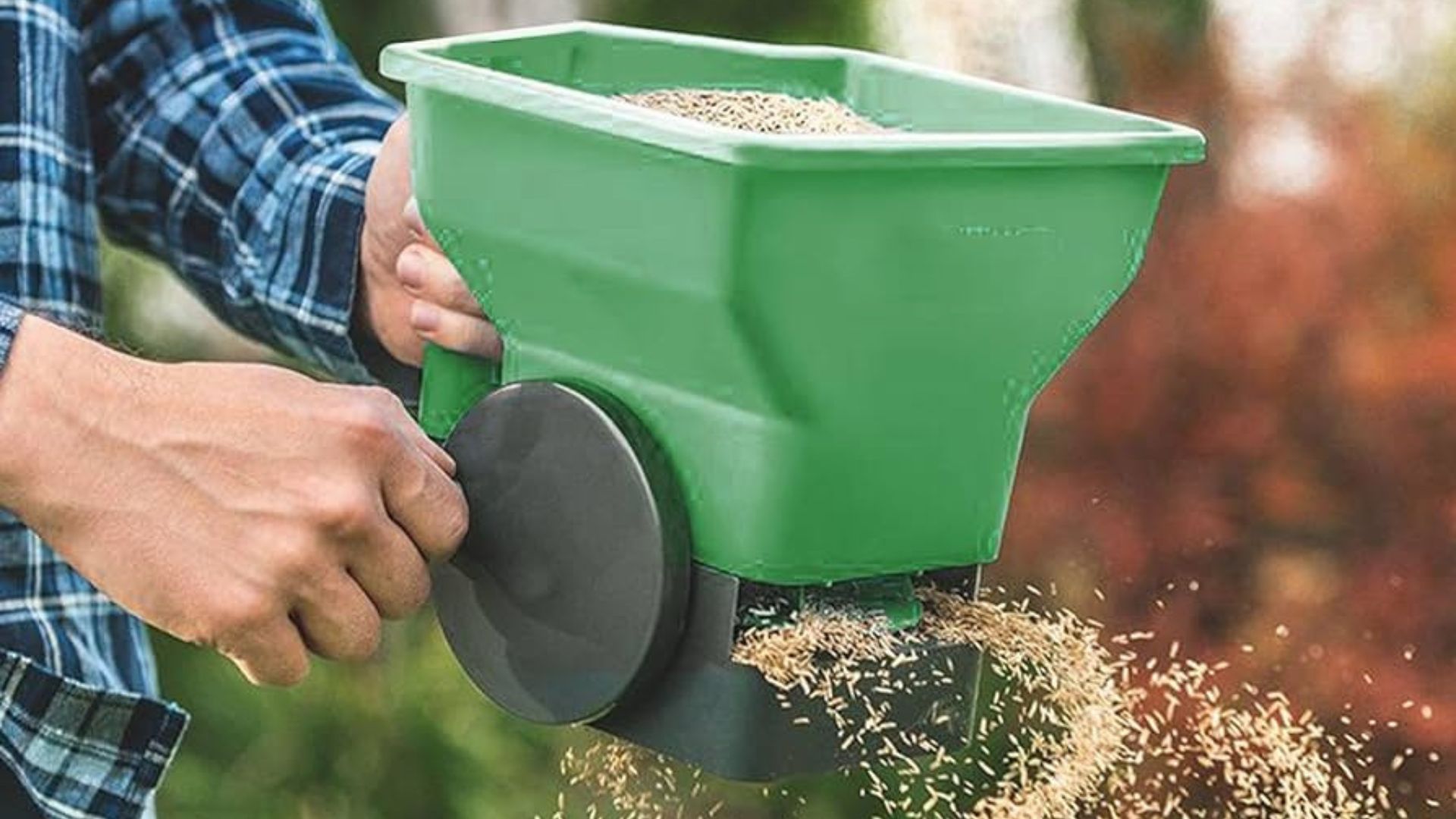Are seed spreaders worth it? 6 pros and cons from the experts
Are seed spreaders worth the hype? We weigh up the facts

If you're dreaming of the perfect lawn then you might be wondering: are seed spreaders worth it? If you want even coverage when you plant grass seed or overseed a lawn, new or established, a seed spreader can be a good investment.
In this article we've got the experts to explain the pros and cons of seed spreaders, so you can make an informed decision ahead of when to sow grass seed and, ultimately, before you buy one. Read on to find out their thoughts, and don't miss our guide to the best lawn mowers that'll help you to cut back the fresh green shoots, too.
Are seed spreaders worth it?
Gardening expert MT O'Donnell from Scotland Grows Magazine told TopTenReviews: "Seed spreaders help to avoid patchiness by distributing seed evenly. They are also extremely helpful for applying granular lawn food or fertilizer to ensure all areas receive the same amount of product."
There are three types of spreader - hand-held, drop and broadcast (also known as rotary). They are most commonly used to spread grass seed, as they enable you to sow it much quicker and more evenly than by hand, gardening expert Craig Morley, from Budget Seeds, told TopTenReviews.
"A seed spreader is likely to be useful to people who have larger lawns or gardens, as it will help them to cover a large area in less time. For those with smaller gardens, they would probably find a drop or hand spreader to be more helpful," he said.
Seed spreaders: the pros
1. Good for covering large areas (apart from hand-held spreaders)
MT says: "A seed spreader maximizes time efficiency in what can be considered quite a big garden job, allowing you to cover more ground quicker."
This isn't the case for hand-held spreaders, however, which are designed for use in smaller yards.
Sign up to receive the latest news, reviews, buying guides and deals direct to your inbox

Craig Morley is the Head of Sales and resident gardening expert at Budget Seeds. He has extensive and professional knowledge of hundreds of different plant varieties.
2. More accurate than hand sowing
Some seed spreaders throw out seed using a rotary mechanism, whilst others drop the seed in one spot, which is best used when accuracy of seeding is required.
Drop seeders, like this Agri-Fab Drop Spreader/Spike Aerator on Amazon, tend to be more accurate than sowing by hand, because seeds are only released on the area being rolled over. They also have a more even dispersal than broadcast (rotary) spreaders due to their spreading pattern. This helps reduce seed waste and can save money in the long run.

Craig says: "Broadcast (rotary) seed spreaders are mounted on wheels, and offer great control over the amount of seed that is spread." An example of this type of spreader is the Scotts Turf Builder EdgeGuard Mini Broadcast Spreader for $55.99 on Amazon.
But MT adds: "With a rotary spreader, you need to move at a steady, even pace to increase accuracy of application, and it can be difficult to control the flow pattern of product which may throw out into areas where it is not needed, like bordering flower beds."

MT O'Donnell is publisher of Scotland Grows Magazine and host of the The Scotland Grows Show Podcast.
3. Time-saving
"One of the big pros of using a seed spreader is they are great for cutting down on the time and effort of seeding a large lawn. Using one can also reduce the amount of seed that you need to buy, therefore cutting back on waste," explains Craig.
Seed spreaders: the cons
Although seed spreaders offer a number of benefits, they're not without their flaws. And before you invest in a new gardening tool, it's important to consider the potential drawbacks.
1. Not all spreaders are the same
Craig tells TopTenReviews: "Drop spreaders are great for sowing seeds along borders or other tight spaces such as paths. However, compared with other types of spreaders they can have a limited width of spread, meaning it is easy to make mistakes and they may sow the incorrect amount of seeds.
"If used on a lawn, they can sometimes cause an unintentional stripe effect if not applied carefully."
2. Not suitable for smaller areas like flower beds
Broadcast seed spreaders are not as suitable for spreading seed on smaller areas like flower borders, as it may be harder to control how much seed is spread in tighter spaces, says Craig.

3. Battery-operated spreaders not very efficient
Hand spreaders are not always as efficient as they are often battery powered, so can only be used for short periods of time, says Craig. They are also designed for small gardens and yards, so are not ideal for people needed to cover larger spaces.
This Scotts Wizz Spreader is for handheld use, and available to buy for $31.49 on Amazon. It's suitable for spreading grass seed as well as fertilizer, salt and ice melt

Verdict: Are seed spreaders worth it?
As with many yard tools, the answer to this question depends on the size of the area you want to sow, your needs and budget.
"Seed spreaders help to take out the guesswork from lawn seeding, allowing a more measured approach which saves both time and money", says MT.
"Whether you are seeding a whole new area, improving or feeding an existing lawn, the right spreader will help ensure you get the most from your efforts and your seed investment."

MT adds: "If your lawn is over 40m2, it's a good idea to invest in a grass seed spreader, which can be pushed along to make things more efficient. Even on a smaller area though, a hand-held seed spreader helps to ensure a measure quantity of seed is applied to each area rather than simply throwing down seed by hand and hoping it lands evenly."
Craig backs this and shares: "If you have a larger lawn or garden, or predict you will be using a seed spreader a lot, it would be worth buying a drop or rotary spreader. This will cut down on the amount of time and work involved on your part, and the spreader can also be multi-purpose and be used to apply other materials such as fertilizer."
Once you've sown your grass seed, with or without a spreader, it would be worth knowing how look it takes for grass seed to grow since it can take longer than first anticipated, especially given the different climates and types of seed available. Then, once grown, find the best gas lawn mower or electric lawn mower to keep the lawn looking tidy and healthy.
Maddy has been a writer and editor for 25 years, and has worked for some of the UK's bestselling newspapers and women’s magazines, including Marie Claire, The Sunday Times and Women's Health. Maddy is also a fully qualified Level 3 Personal Trainer, specializing in helping busy women over 40 navigate menopause.

